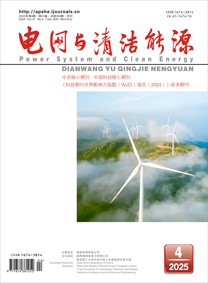| 基于多源气象数据的光伏功率预测深度学习架构 |
| 点此下载全文 |
| 引用本文:马成廉1,韩瑞1,2,宋萌清1,尹波1,刘利则1,杨茂1,孙黎1.基于多源气象数据的光伏功率预测深度学习架构[J].电网与清洁能源,2025,41(4):104~112 |
| 摘要点击次数: 7 |
| 全文下载次数: 1 |
|
| 基金项目:国家重点研发计划项目(2022YFB2403000);吉林省教育厅科学技术研究项目(JJKH20230117KJ) |
|
| 中文摘要:精确预测太阳能发电对于可持续能源系统的发展至关重要。现代预测方法常常未能充分考虑天气因素在光伏发电中的关键作用,并在处理大量时间序列数据时存在梯度爆炸或消失的问题。为克服上述挑战,该研究提出了一种名为D-Informer的多阶段预测方法。该方法融合了差分转换算法与Informer模型,充分利用详细的气象变量和历史PV发电记录。D-Informer模型在多个性能指标上展现了对比其他模型的显著优越性,平均降低了67.64%的均方误差(mean squared error,MSE)、49.58%的平均绝对误差(mean absolute error,MAE)和43.43%的均方根误差(root mean squared error,RMSE),特别是在冬季实现了0.991 7的R2值,凸显了其精确性和可靠性。多自注意力机制的引入,大大增强了模型识别不同输入变量间复杂相互作用的能力,以及包含天气变量,丰富了模型的输入数据,增强了其在时间序列分析中的预测准确性。此外,实验结果也证实了所提方法的有效性。 |
| 中文关键词:功率预测 深度学习 天气驱动 太阳能发电 |
| |
| Deep Learning Architecture for Photovoltaic Power Prediction Based onMulti-Source Meteorological Data |
|
|
| Abstract:Accurate forecasting of solar power generation is crucial for the development of sustainable energy systems. Modern forecasting methods often fail to adequately consider the key role of weather factors in photovoltaic(PV)generation and suffer from gradient explosion or vanishing issues when confronted with extensive time-series data. To address these challenges,this study proposes a sophisticated multi-stage forecasting approach termed as D-Informer. By integrating the differential transformation algorithm with the Informer model,this method effectively harnesses a comprehensive array of meteorological parameters alongside historical PV power generation data. The D- Informer model demonstrates substantial superiority over other models in multiple performance metrics, reducing the Mean Squared Error(MSE) by 67.64%,the mean absolute error (MAE) by 49.58%,and the root mean squared error (RMSE) by 43.43% on average. Notably,it achieves an outstanding R2 value as high as 0.9917 in winter,highlighting its precision and reliability. This notable advancement owes much to the incorporation of a multi- head self-attention mechanism,which enhances the model’s capacity to discern intricate interactions among diverse input variables. Moreover,the inclusion of weather parameters enriches the model’s input data,bolstering its predictive accuracy in time series analysis. Experimental findings validate the efficacy of the proposed approach. |
| keywords:power prediction deep learning weather- driven solar energy generation |
| 查看全文 查看/发表评论 下载PDF阅读器 |



